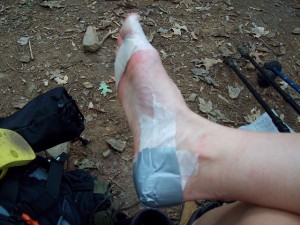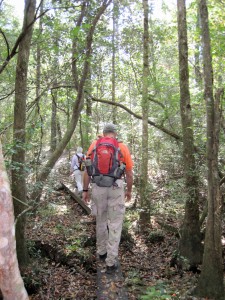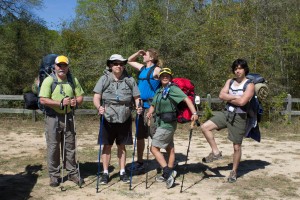One would think that there wouldn’t be a need for a how-to-hike article, but surprisingly there is. Every day a would-be hiker sets off onto the trail woefully unprepared. A handful of those would-be adventurers encounter trouble and wind up in need of rescue, an effort that can be costly, time-consuming and potentially place others at risk.
So what should a spur-of-the-moment hiker do before hitting the trail? First, make sure that you have the proper footwear and wicking socks to pull moisture away from your skin. Your feet are the most valuable asset you have on a hike and essential for getting you back out. Many a hike has been cut short by debilitating blisters or a sprained ankle. Proper footwear is a must. If you enjoy hiking, keep a spare pair of boots and socks in your vehicle for those spontaneous hikes.
Before hitting the trail, make sure you have plenty of water, even if you think you’ll only be gone for an hour. Exercise coupled with heat can dehydrate you quickly, causing confusion and disorientation. Humidity, direct sun exposure and wind can accelerate dehydration.
Familiarize yourself with the trail map. If there aren’t any handouts available at the trailhead/kiosk, take a picture of the map for reference. If you are using your phone as a compass or GPS, be sure to calibrate it before setting off. As for your phone, don’t rely on it solely to get you out of an emergency. Oftentimes there is spotty or no reception in wilderness areas.
You’ve heard it a dozen times, tell someone where you are going and when you expect to return. If you run into trouble, you want to know that someone will eventually start looking for you. If you are hiking alone, leave a note on the front seat of your car in case rescuers need to gather more information.
Stay on the trail. No, really. Bears, bees, briars and bitey things abound off of the trail. Cliffs, crevasses and sink holes may also lie in wait just out of sight. Staying on the trail helps prevent unnecessary trail erosion and is the first place you’ll be found if you get injured.
Give yourself plenty of time to complete your hike and don’t start a hike right before dark. The sunset may look awesome from the lookout point, but trying to find your way back down the trail in the dark is the quickest way to become lost or injured. Nightfall is also when a lot of animals emerge and go on the prowl.
Be prepared for weather changes. Inclement weather can always pop up at the least convenient time. If you are in a low-lying area, try to get to higher ground and wait it out. Parts of your trail could get washed out or become a raging river. Don’t try to cross rising water because you could get swept downstream making it harder for rescuers to find you.
If you do become lost, S.T.O.P. That stands for Stop where you are. Don’t panic. The best course of action is usually to stay put and wait for rescue. Think about what you need to do and your options. Observe your surroundings and resources. Make a Plan and proceed. At all times keep calm and stay focused.
Ideally, you will be more prepared and knowledgeable about your upcoming hike than the average person. It is your responsibility to make adequate preparations for your trip. Do your research. Have fun and hike on.
[amazon template=iframe image2&asin=B00JERZCK8]




